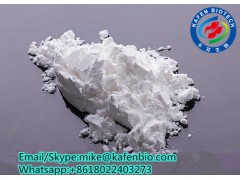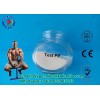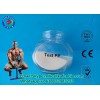Whatsapp:+8618022403273
Anabolic Androgenic Steroids Estradiol Benzoate for Female Sex enhancement
Basic Info.
Estradiol benzoate
Synonyms: (17beta)-Estra-1,3,5(10)-triene-3,17-diol 3-benzoate;1,3,5(10)-Estratriene-3,17-diol-3-benzoate;1,3,5(10)-Oestratriene-3,17-beta-diol 3-benzoate;1,3,5(10)-oestratriene-3,17-beta-diol3-benzoate;17beta-Estradiol monobenzoate;17-beta-estradiolmonobenzoate;17-beta-Oestradiol 3-benzoate;17-beta-oestradiol3-benzoate
CAS: 50-50-0
MF: C25H28O3
MW: 376.49
EINECS: 200-043-7
Chemical Properties White solid
Usage antiacne, antineoplastic
Usage Estradiol is the major estrogen secreted by the premenopausal ovary. Estradiol benzoate is an estradiol analog which contains a benzyl ester at the C-3 position. Estradiol benzoate is useful in the tr eatment of lesions produced by diminution of bodily production of estrogens.
Description
Estrogens direct the development of the female genotype in embryogenesis and at puberty. Estradiol is the major estrogen secreted by the premenopausal ovary. Estradiol benzoate is an estradiol analog which contains a benzyl ester at the C-3 position and is often used in combination with a progestin to induce estrus in domestic livestock. This compound binds to the human and murine estrogen receptor α (ERα), and chicken ER with IC50 values in the range of 22-28 nM. This reflects a 6-10 fold reduction in binding affinity compared to estradiol.
Applications:
The effects of daily injections of 5 microgram estradiol benzoate (EB) on the patterns of food and ethanol consumption were studied in ovarectomized rats given free access to food, a 10% ethanol solution, and water. EB led to an immediate, but transient, suppression of both food and ethanol intake. The time course and magnitude of these effects were virtually identical. While the decrease in total food intake was achieved by a permanent decrease in the duration of eating bouts, the decline in total ethanol consumption apparently resulted from decreased rates of licking within bouts. Gradual increases in the frequency of eating and ethanol-drinking bouts allowed total food and ethanol intake to return to baseline within three weeks of the first injection. Total water intake rose three-fold during EB administration and this was due to increases in both the duration and frequency of drinking bouts. The similarity in effects induced by EB on the patterns of food and ethanol intake were discussed in terms of ethanol's caloric property.















